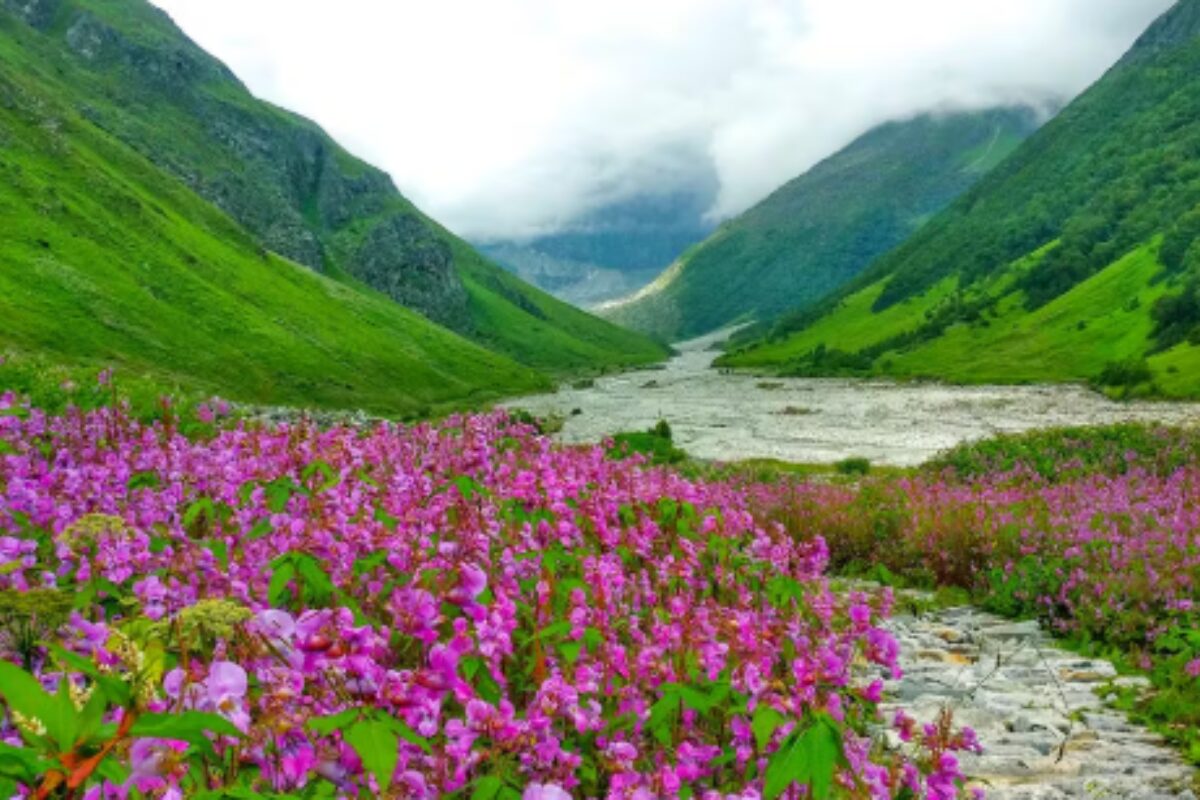
Are you looking for a trek that combines adventure, natural beauty, and a sense of peace? If so, Valley of Flowers might be the destination you’ve been searching for. Tucked away in the Himalayas of Uttarakhand, this UNESCO World Heritage Site is not just another trek—it’s a visual and spiritual journey that captivates every traveler.
Whether you’re a first-time hiker or a seasoned trekker, this trail promises something truly unique. Here are five powerful reasons why the Valley of Flowers is considered the most beautiful trek in India.
Imagine walking through a valley where the ground is blanketed with thousands of flowers in every shade imaginable—blue, pink, yellow, red, and white. This isn’t a fantasy; it’s real. The Valley of Flowers is home to over 600 species of flowering plants, many of which are rare and found only in this region.
What makes this special?
The valley changes color every few days during peak blooming season (July to early September).
Species like blue poppies, brahma kamal, and cobra lilies bloom in harmony.
Each step reveals new colors and shapes, creating an ever-changing canvas of floral beauty.
According to the Botanical Survey of India, this region is among the richest biodiversity hotspots in the country.
In 2005, the Valley of Flowers was designated as a UNESCO World Heritage Site due to its rich biodiversity and cultural significance. This recognition alone puts it on the global map as a must-visit destination for nature lovers.
It confirms the valley’s global ecological value.
Conservation efforts ensure the area remains pristine and untouched.
Trekking here means witnessing nature in one of its purest forms.
The trail is part of the Nanda Devi Biosphere Reserve, which adds an extra layer of environmental protection, making it a responsible trekking choice for eco-conscious travelers.
Unlike more strenuous Himalayan treks, the Valley of Flowers trek offers a perfect balance of moderate difficulty and incredible reward.
Trek distance: ~38 km round trip.
Altitude: Starts at Govindghat (~6,000 ft) and climbs to ~12,000 ft.
Time: Ideal for a 4-5 day itinerary, including a visit to Hemkund Sahib.
This makes the trek ideal for beginners who want to experience Himalayan trekking without pushing their physical limits too far.
Want a more spiritual extension to your journey? Add Hemkund Sahib, the highest Gurudwara in the world, just a few kilometers uphill from the main trail.
Though known for its blooming fields, the Valley of Flowers is also a sanctuary for rare wildlife. If you’re lucky and quiet, you might spot:
The elusive snow leopard (very rare but possible)
Himalayan black bears
Musk deer
Red foxes
Colorful butterflies and rare bird species
The blend of alpine meadows, waterfalls, and lush forest zones creates a thriving ecosystem that’s a photographer’s and biologist’s dream.
According to WWF India, this area plays a key role in preserving the Himalayan ecosystem.
Sometimes, the most beautiful treks aren’t just about the views—they’re about the feeling they leave behind. The serene surroundings, the fresh mountain air, and the spiritual aura of the place create an experience that’s deeply calming.
Many trekkers say they feel more connected to nature and themselves after walking through the valley. It’s not just a physical trek—it’s an emotional and spiritual detox.
Highlights that elevate the experience:
The soothing sound of Pushpawati River.
Natural rock bridges and waterfalls.
Morning mist and sunset views over flower-covered slopes.
The Valley of Flowers is the kind of place that stays with you long after you’ve returned home.
Best Time to Visit:
Mid-July to early September (peak blooming season)
How to Reach:
Nearest railhead: Rishikesh or Haridwar
Road trip: Govindghat is the starting point (reachable via Joshimath)
Trek route: Govindghat → Ghangaria → Valley of Flowers
Permits & Entry:
Entry permit required from the forest department at Ghangaria
Entry timings: 7:00 AM – 5:00 PM only
No camping allowed inside the valley—return the same day
Essentials to Carry:
Good trekking shoes
Rain gear (monsoon season!)
Water bottle, energy snacks
Basic first aid kit and eco-friendly toiletries
If you’re searching for a trek that blends visual beauty, natural wonder, and spiritual calm, the Valley of Flowers stands unmatched. It’s more than just a trail—it’s a journey into a living paradise.
With its ever-changing bloom, rich biodiversity, moderate trail difficulty, and sacred energy, it’s no wonder why this is hailed as the most beautiful trek in India.
©Famous India Blog. All rights reserved.
Creativity By Needinfotech